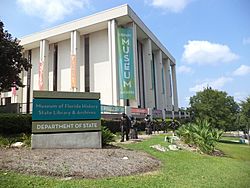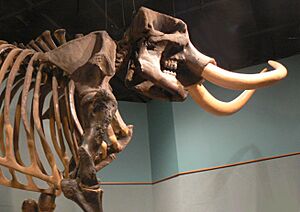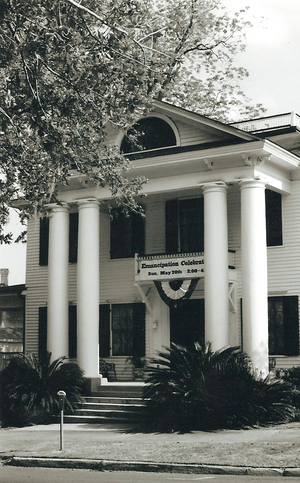Museum of Florida History facts for kids
 |
|
| Lua error in Module:Location_map at line 420: attempt to index field 'wikibase' (a nil value). | |
| Established | 1977 |
|---|---|
| Location | R.A. Gray Building 500 South Bronough Street Tallahassee, Florida |
| Type | History |
The Museum of Florida History is a special place in Tallahassee, Florida. It is Florida's official history museum. Here, you can explore the past of the U.S. state of Florida. The museum shows exhibits and artifacts from Florida's long history. This includes times before people wrote things down. You can find it in the R. A. Gray Building. The building is named after Robert Andrew Gray.
The museum has a main gallery. This gallery features new exhibits every few months. It also has many exhibits that stay there all the time. Past exhibits have shown the history of women's activism in Florida. Others have displayed beautiful Florida landscapes. Some have explored what life was like in Florida in the 1900s.
The Museum of Florida History opened in 1977. Its main job is to collect and keep things from Florida's past and present. It also shows these items to the public. The museum helps people learn about and appreciate Florida's heritage.
As the state history museum, it focuses on items and times that are special to Florida. It also shows how Floridians have played a part in big events around the world.
Through its exhibits and learning programs, the museum helps us understand. It shows how people have lived and changed their surroundings. It also shows how they have reacted to nature.
The Florida Department of State helps run the Museum of Florida History. It is part of the Florida Division of Cultural Affairs.
Exploring the Knott House
The Museum of Florida History also takes care of the Knott House. This historic house was built way back in 1843. During the American Civil War, the Knott House was important. It served as a temporary office for the Union Army in Tallahassee.
A very important announcement was read from its steps on May 20, 1865. This announcement was called the Emancipation Proclamation. It declared that all enslaved people in the Florida panhandle were free. After the Civil War, Florida's first Black doctor started his career working for another doctor at this very house.
More to Discover
- Florida Historical Society
- State Library and Archives of Florida



